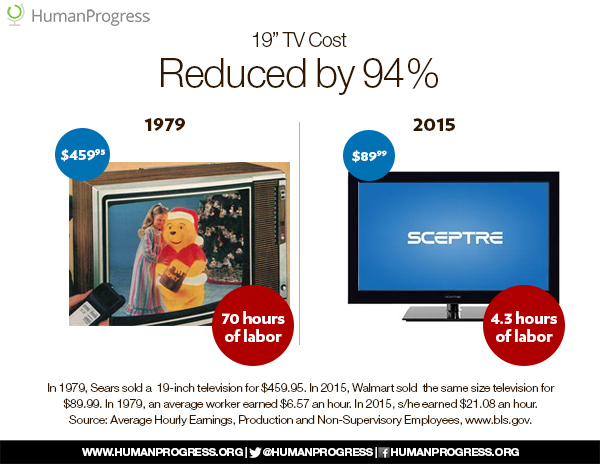What’s your favorite TV show? The average U.S. worker has more free time for entertainment and enjoys a far greater variety of available entertainment choices than did previous generations—and all at a discount. Televisions, like so many material goods, have come down in price considerably since 1979, especially when cost is measured in hours of labor. A 19-inch television cost the average American 70 hours of labor in 1979. In 2015? Only 3.4 hours.

So whether you enjoy documentaries, sitcoms, crime dramas, science fiction, or something else entirely, the next time you sit down in front of your television, remember: you’re watching TV at a discount!

